Introductory Note
I took this trip back in August 2021 – so I’m a little delayed in the write up. But I’ve written this based on my memory, photos from the trip and my notes in the dive log.
For a lot more information than this post can provide, two sources I highly recommend on Scapa Flow are Rod Macdonald’s Dive Scapa Flow and https://www.scapaflowwrecks.com/, which has helpful 3D models of the wrecks.
Diving Scapa Flow as a recreational diver
I’m a big lover of history and believe it or not, scuba diving. So diving on wrecks is an obvious choice for me. When it comes to wrecks in the UK, it doesn’t get much better than Scapa Flow.
Despite growing up in Scotland, I’d never considered exploring local waters and was firmly in the holiday diver, warm water only camp. Fast forward to today and I now own my own drysuit and have been lucky enough to dive on WW1 wrecks in Scapa Flow.
The planning started during covid. After our April 2020 Red Sea liveaboard was cancelled, I went down a land-based diving rabbit hole and read as many diving books I could get my hands on. One of those was Rod Macdonald’s book on the wrecks of Scapa Flow and after seeing the diving available to me on my doorstep, I started researching how to make it happen. From what I read online, it seemed like Scapa Flow was a technical divers playground but not generally suitable for recreational divers. At that point only having ~40 dives in my logbook, none of which were in a drysuit, it seemed like diving at Scapa would have to wait. However the first step was to get back in the water and learn how to use a drysuit.
I took my drysuit certification in September 2020 and quickly followed that up with dives on the west and east coast of Scotland, and at Drawna Rock in Cornwall. Meanwhile I’d been exchanging emails with the team at Kraken Diving in Orkney about a potential future trip to Scapa Flow. Despite only having seven drysuit dives under my belt, was a trip doable?
The answer was yes – but I’d have to do one day of shore diving with them in 12m so they could verify my skills as competent enough to get out on the German fleet. This seemed like a fair deal and so I booked a trip!
Scapa Flow
Scapa Flow is a naturally protected bay in the Orkney Islands, to the north of mainland Scotland. The topography of the islands means it’s been used as a base for navies dating all the way back to the Vikings in the 11th century. More recently, Scapa Flow served as the main base for the British Navy during the First and Second World Wars.
At the end of WW1, while the Allies and Germany finalised the Treaty of Versailles, the German fleet was interned at Scapa Flow. A skeleton crew was left on each ship with the British Navy responsible for daily deliveries of supplies. The Brits chose to manage the flow of information to their prisoners and delayed the delivery of newspapers to the German crews by four days. After the original deadline for the conclusion of the treaty negotiation passed, an extension was agreed. However German Rear Admiral, Ludwig von Reuter, was unaware and made the call to scuttle the fleet.
Over the years since the scuttling, salvage rights were passed around and the vast majority of the ships were gutted for valuable raw materials.
Thankfully the site was declared a heritage site on xxx and today seven of the wrecks remain on the sea floor available to divers.
Rod MacDonald’s book provides an excellent level of detail on the history and the shipwrecks themselves.
Getting there
By Plane: Loganair flies to Orkney from all over the UK but flights are generally expensive. At the time of writing they don’t have a direct flight from London so you’ll need to connect in Aberdeen or Edinburgh. The standard luggage allowance is 15kg so if you’re flying with lots of diving gear you may need to pay extra.
By Boat: There are three ferry crossings to Orkney: Aberdeen to Kirkwall (six hours), Scrabster to Stromness (90 minutes) and Gills Bay to St Margarets Hope (one hour).
At the time of my trip (August 2021), I lived in Edinburgh and conveniently that meant driving was an option. All my diving would be from Stromness so I chose Scrabster as my departure point: a five hour drive from Edinburgh.
Where to stay: I stayed at the Ferry Inn in Stromness. There’s free parking nearby and it’s less than five minute walk to the various pick-up points for the dive boats.




The Diving
I’m still relatively early in my diving career and so haven’t yet taken the plunge on investing in proper underwater photography gear. In future I’d love to go back with camera gear in tow – I take great inspiration from Brett Eldridge’s excellent blog. But for now readers will have to make do with my ability to describe the wrecks and dives.
The first day of diving was shore based and a chance for the Kraken team to judge if my seven prior dives in a drysuit were enough to let me loose on the open ocean. We were diving in a backplate and wing set-up (my first time) and while it took a little getting used to, I was quickly sold on the advantages over a traditional jacket-style BCD.
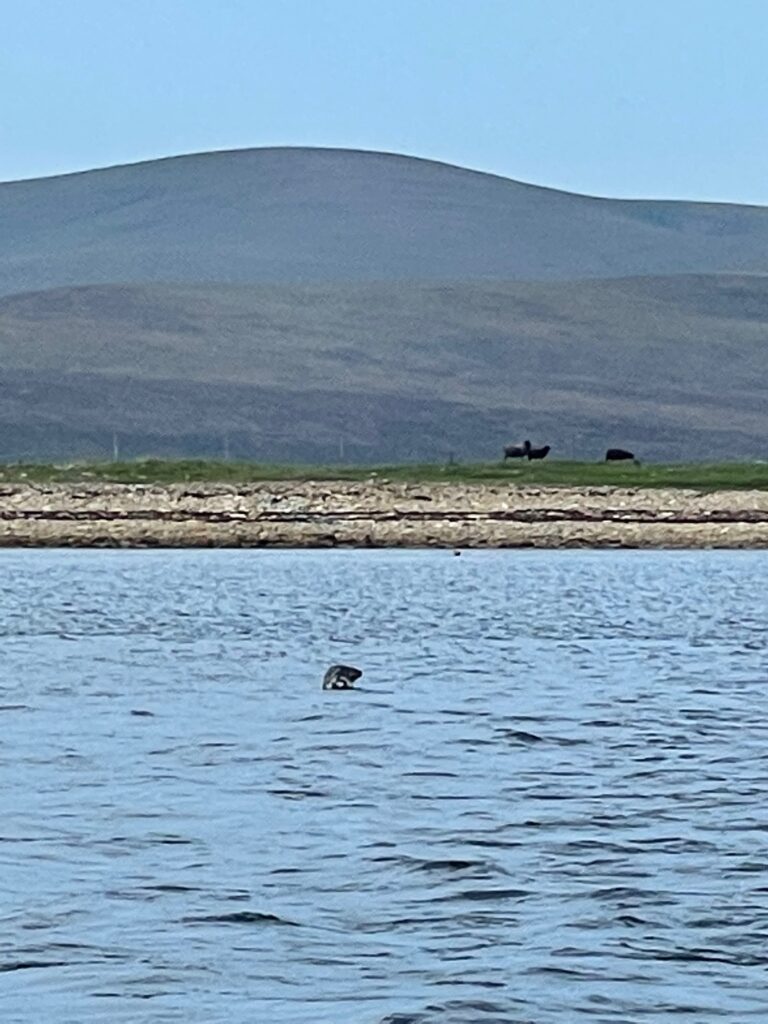
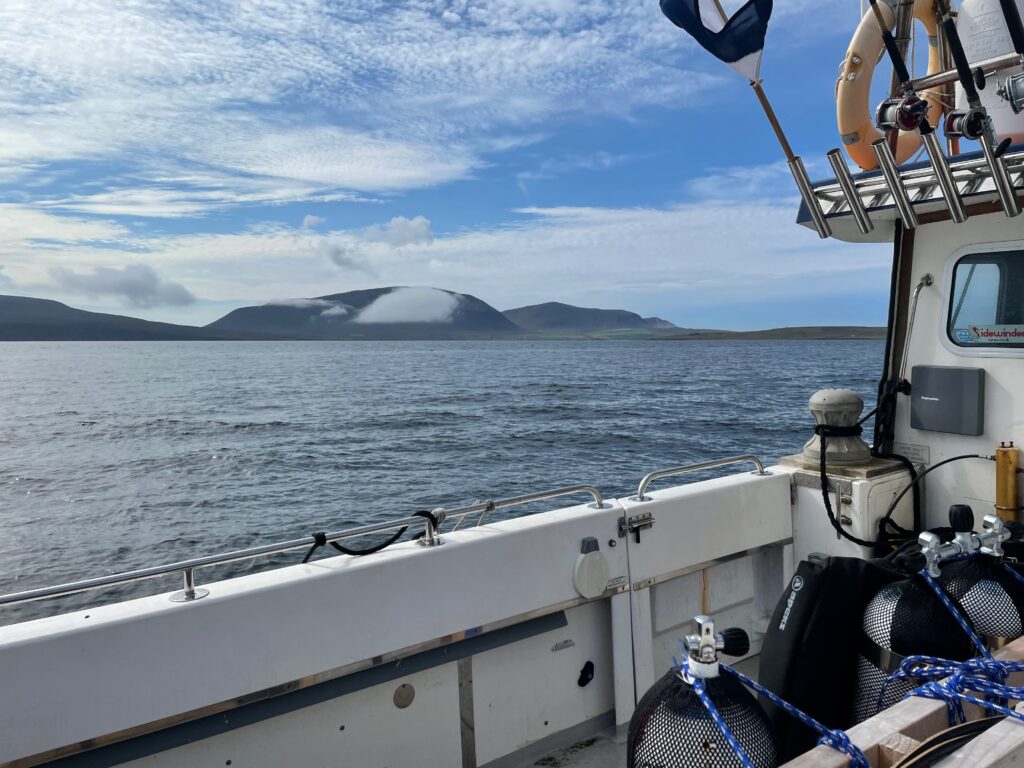
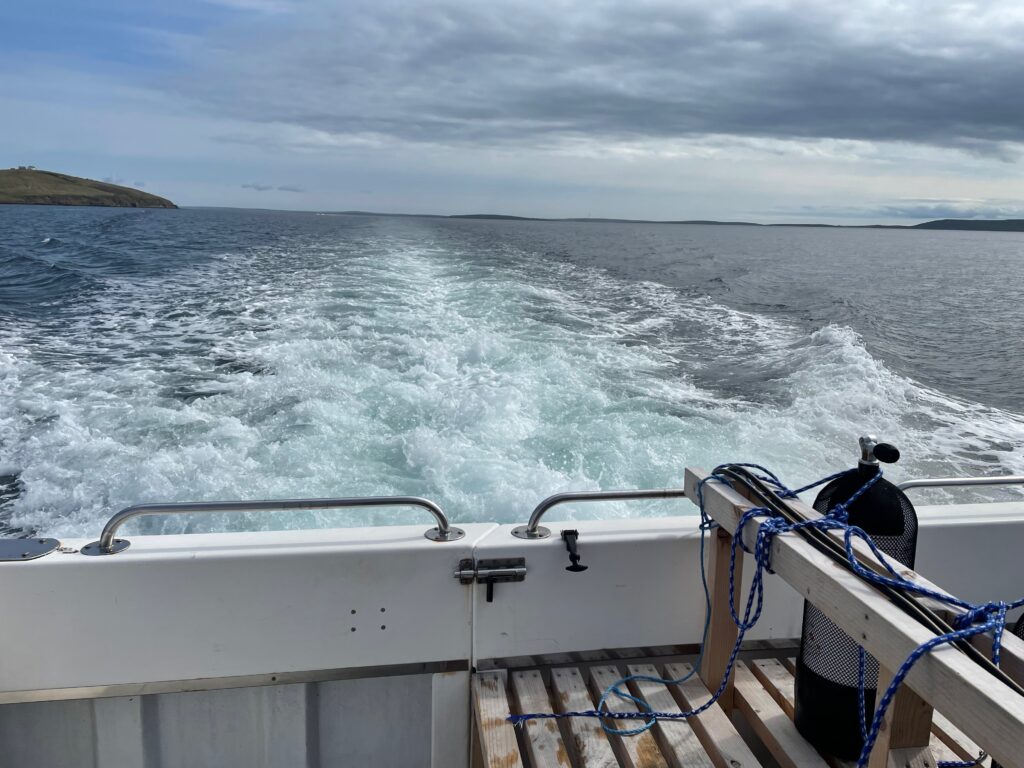

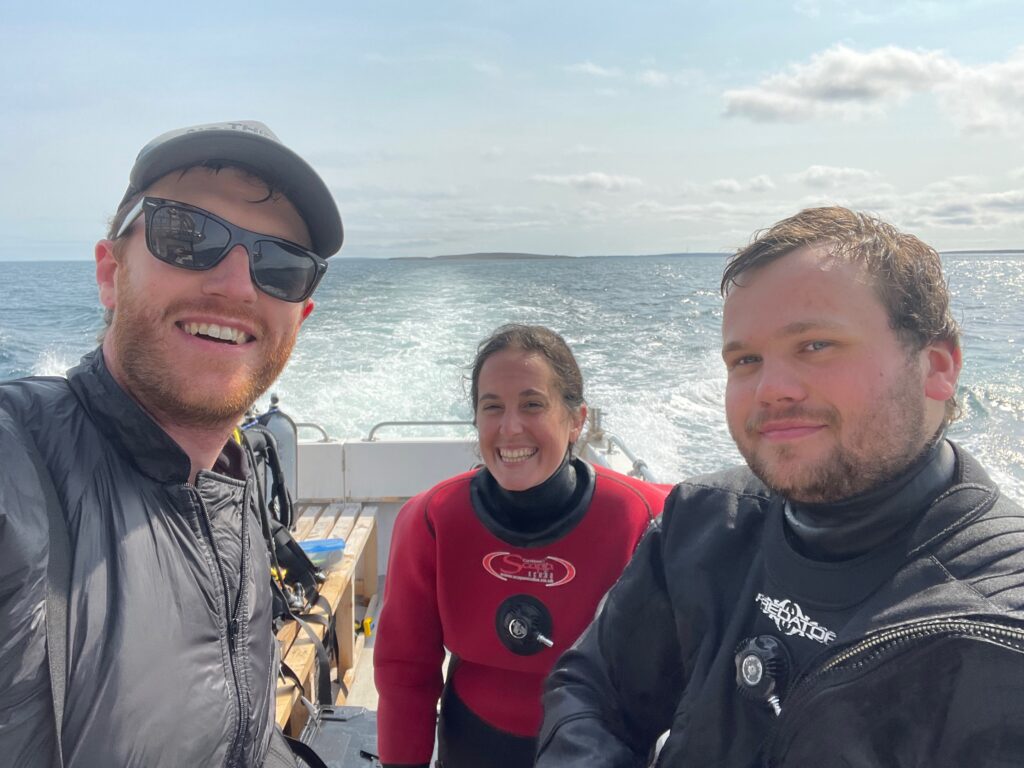
Day One – the Blockships
During WW1, to prevent German submarines sneaking into Scapa Flow and sinking British ships, a number of ships were scuttled to block the entrances. Today you can still see a number of the blockships at low tide from land. And at high tide they make for excellent training dives and introductions to the Scapa Flow diving environments. The blockships were later replaced by the Churchill Barriers after U-47 navigated around the dilapidated block ships in October 1939 to sink HMS Royal Oak.
Today the Blockships make for a peculiar sight at low tide, as a number of them are visible from the road. I spent my first day diving on the SS Martis and Empire Seaman – both situated in East Weddell sound and scuttled in June 1940.
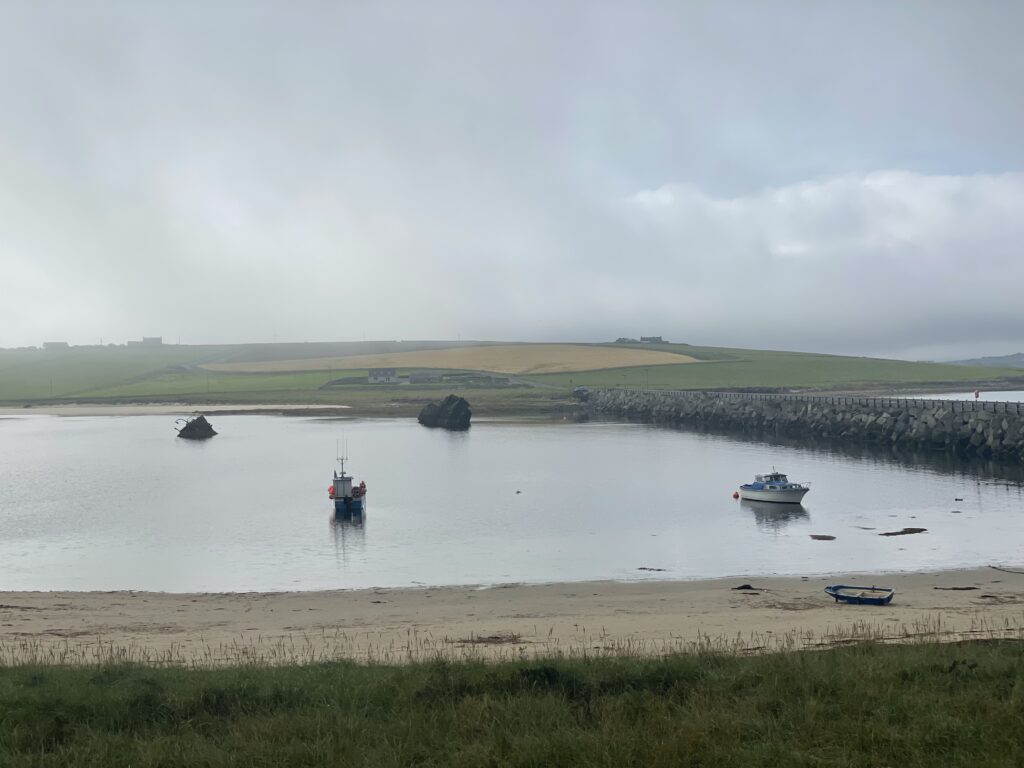
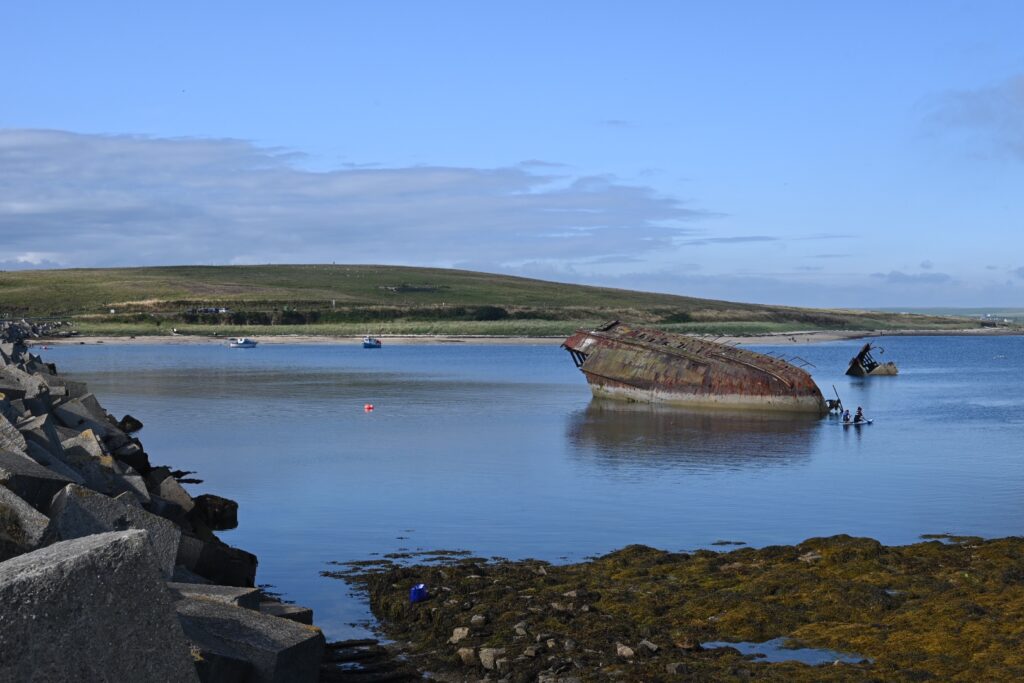
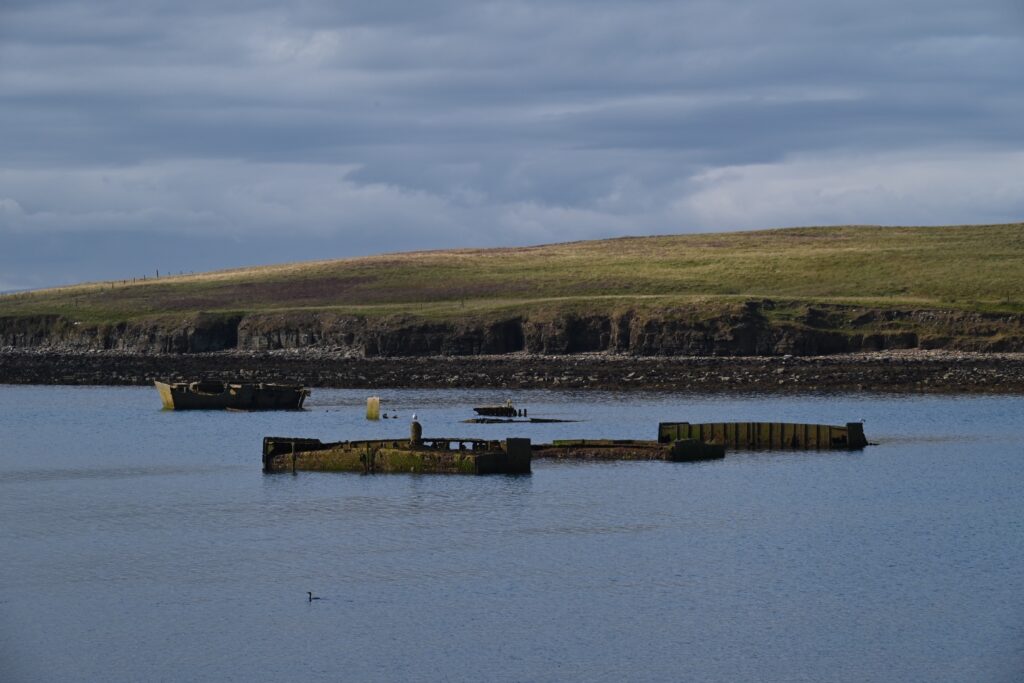
The SS Martis
The SS Martis was built in South Shields (Glasgow, Scotland) in 1894 by John Redhead & Sons Ltd (this link has an awesome booklet from 1948 on the history of the firm) and was originally named the William Balls. The Martis was 91.5 metres long with a beam of 12.6 metres. The ship was renamed the Martis in 1929 before being sold to the Admiralty in 1940 for scuttling as a blockship in Orkney.
Today all that remains of the wreck is a 60 metre section of the ship with the stern and bow having been removed during the post-WWII salvaging works. The wreck sits in shallow water of up to nine metres.
To reach the wreck, we swam out over the remains of the SS Gartmore, another of the many blockships spread across Scapa Flow. The dive itself was a good introduction to the area, with interesting swim-throughs interspersed with a number of crabs on the sea floor. Visibility was generally ok at around 5 metres, though it did drop below 1 metre in places.
SS Empire Seaman
The SS Empire Seaman was built by Flender Werke in Lübeck, Germany in 1922 and launched as the SS Morea at 88 metres long and with a beam of 12.7 metres.
On 12 February 1940, the Morea was captured by HMS Hasty and renamed SS Empire Seaman before being taken to Scapa Flow for scuttling four months later. The prefix ‘Empire’ on the name of a ship is used to denote a merchant ship captured or requisitioned by the British during or after WW2 and put to service in support of the war effort.
As with the Martis, the wreck was heavily salvaged after the war and today only the midships remain for divers to explore. However it’s a great dive with a few nice swim throughs. One under the midships which is propped up on two rocks and another through the prop shaft tunnel.
Days Two and Three – The High Seas Fleet
Thankfully day one was without incident – aside from floaty legs on dive one which we solved with ankle weights – and I graduated to the High Seas Fleet for days two and three! Lucky for me there were no other divers booked in and I had a Divemaster Guide and Divermaster Trainee all to myself.
I’d spent a lot of time reading up on the wrecks before heading out, but left it with the team at Kraken to decide which wrecks would be best given the conditions and my lack of experience drysuit diving. The targets for day two were the Dresden and the Cöln. Day three we’d move to the König and the Karlsruhe.
SMS Dresden
The SMS Dresden was a Cöln Class Light Cruiser, laid down in 1916 and launched on 25 April 1917. The ship was 155m long with a beam of 14m and a draught of 6m. Dresden was commissioned into the Kaiserliche Marine in March 1918 and with only eight months of WW1 remaining, never saw the heat of battle.
Today the wreck rests on its port side on a slope. The bow is at 25m and the stern 38m. There are shotlines on the bow and stern.
We planned to descend on the bow line, and explore down towards the stern line at a max depth of 30m. However we accidentally dropped down the stern line which quickly became apparent as I saw only a faint outline of the wreck as we approached 30m!
We changed plans and finned along the outside of the wreck at 30m before exploring the midships around the control tower. Despite the shaky start, this was one of my favourite dives. The wreck is still remarkably intact.
SMS Cöln
Like the Dresden, SMS Cöln was a Cöln Class Light Cruiser laid down in 1915, launched in October 1916 but not commissioned until January 1918 – only 10 months before the end of the war. Being of the same class, it too was 155m long with a beam of 14m and a draught of 6m. Given its late commissioning, it saw little service before being brought up to Scapa Flow at the end of the war.
The wreck is more or less intact and sits in 22-38m of water. My record keeping (dive log) was a little poorer at this point and my memory of this specific dive isn’t so clear. After we surfaced from the dive on the Cöln we headed back to shore to close out day two.
SMS König
Despite the heavy damage and depth of the wreck, the König was one of my favourite dives. The SMS König was the namesake of the König class battleships and commissioned into service in August 1914. The ship was an impressive 175m long with a 29.6m beam and 9m draught. It was a monster of a ship with a service history to match.
The König was the lead battleship of the High Seas Fleet in the Battle of Jutland, the largest naval battle of the First World War and possibly the most famous naval battle in history. Being a history lover, I relished the opportunity to see one of the ships from Jutland.
The wreck today is deep and sits in 42m of water, however the shallowest section of the upturned keel is at 20m. With the extensive blasting damage from salvage, there is a lot to see even at the shallower depths.
SMS Karlsruhe
For the last dive of the trip, we actually planned to dive another wreck but the weather conditions meant we changed last minute to the shallower SMS Karlsruhe.
The Karlsruhe was a Königsberg class light cruiser commissioned into the German Navy in November 1916. Karlsruhe was 151m long with a beam of 14m and a draught of 5.8m.
The wreck lies on its starboard side in 25m of water, with the shallowest part of the wreck in only 12m, and is therefore a much shallower dive than the rest of the High Seas Fleet. The wreck is in generally poor condition thanks to the blasting from the salvagers. However the guns are still intact and a sight to behold.
After spending some time poking around the guns, it was time to head up. On the first three dives, we’d descended and ascended on a shotline. However on this final dive my DM and guide suggested practicing ascending on a DSMB in blue water i.e. with nothing to actually hold on to if I couldn’t control my drysuit buoyancy! As we started our ascent all was going to plan. However we soon hit 10 metres and the air in my suit expanded faster than I could expel it. I therefore proceeded to shoot towards the surface. Luckily my DM trainee was one step ahead and repositioned herself above me in time to halt my out of control ascent. We vented some air and I succeeded in holding my safety stop at 5 metres for the remainder of the dive.
It was a hectic end (and one which I learned from) to an awesome three days of diving. After surfacing from the Karlsruhe it was time to head back to shore and start the long drive home to Edinburgh!
Dive Summary
- Dates: 22nd to 24th August 2021
- Dive Log: #49-54
- Max depth: 30.9m
- Max water temp: 13.9C (57F)
- Min water temp: 12.2C (54F)
- Dive Shop: Kraken Diving
- Price per dive: £103 (including rental equipment and Nitrox)
| Dive # | Date | Dive Site | Duration (mins) | Max Depth (m) | Avg Depth (m) | Temp High (C) | Temp Low (C) |
| 49 | 22/8/21 | SS Martis | 49 | 9.7 | 6.4 | 13.9 | 12.2 |
| 50 | 22/8/21 | SS Empire Seaman | 43 | 9.4 | 5.9 | 13.9 | 12.2 |
| 51 | 23/8/21 | SMS Dresden | 37 | 30.9 | 22.4 | 13.9 | 12.2 |
| 52 | 23/8/21 | SMS Cöln | 35 | 30.4 | 20.1 | 13.9 | 12.2 |
| 53 | 24/8/21 | SMS König | 33 | 30.3 | 20.6 | 13.9 | 12.2 |
| 54 | 24/8/21 | SMS Karlsruhe | 38 | 26.9 | 20.0 | 13.9 | 12.2 |

1 thought on “Scapa Flow: Diving WW1 Wrecks as a Recreational Diver”